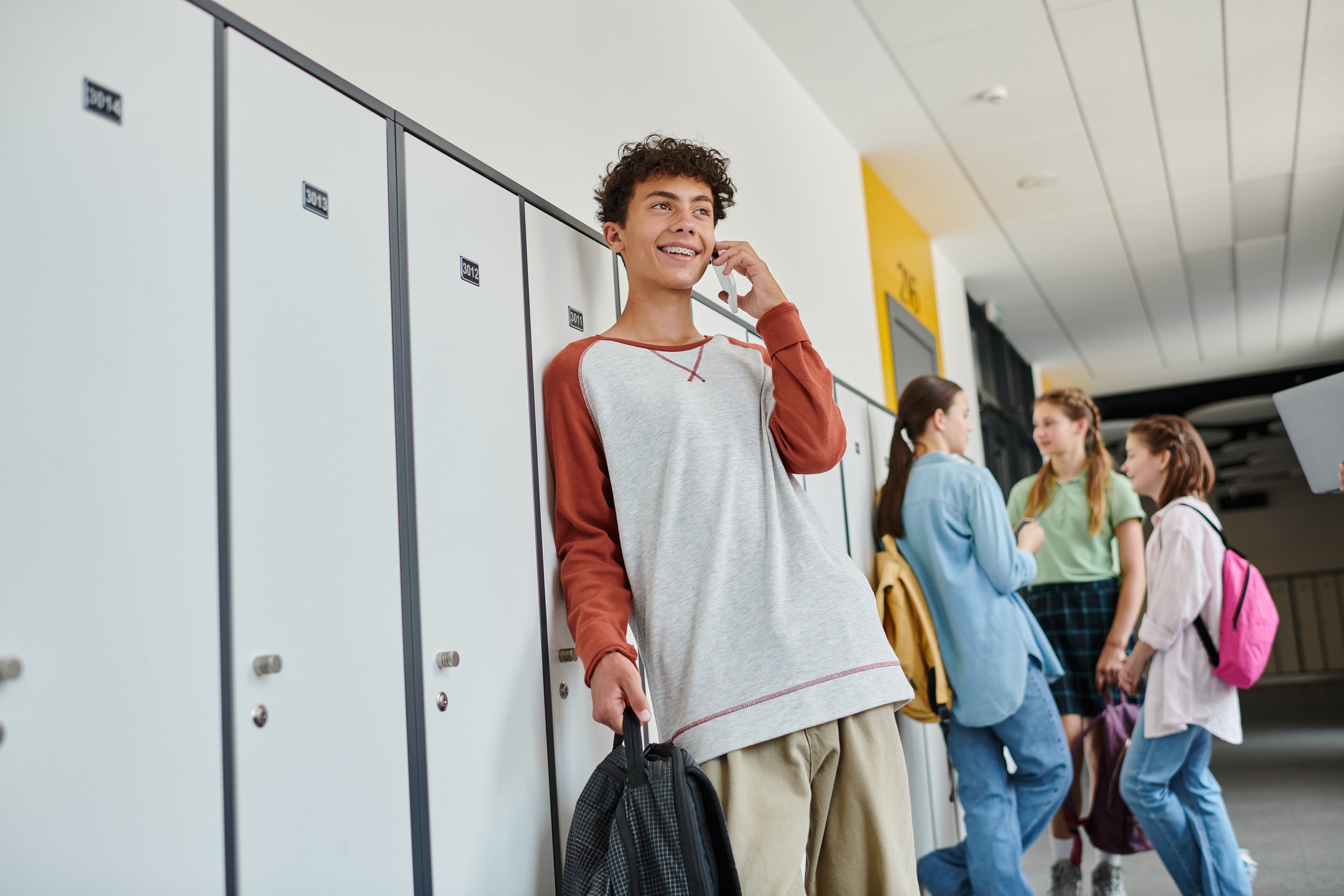Cell phones are a huge part of students’ lives, shaping how they learn, connect, and communicate. While these devices offer access to powerful tools and information, they also bring major challenges to the classroom. Teachers are feeling the strain as they work to balance technology’s benefits with its potential to disrupt learning, and districts are grappling with the complex task of setting clear, effective boundaries for cell phone use.
It’s no surprise, then, that schools are taking action. As of early 2024, approximately 76 percent of public schools prohibited non-academic use of cell phones or smartphones during school hours. But having a policy is just the start—how do you know if it’s actually working? Are the rules meeting the needs of students, families, and teachers?
In this blog, we’ll share 12 essential questions from Panorama’s Cell Phone Impact and Policy Survey to help district leaders craft and evaluate cell phone policies. Whether your district already has guidelines in place or is revisiting them in light of new statewide laws, these questions will help ensure your policies support a safe, focused, and community-aligned learning environment.
Download Panorama's Cell Phone Impact and Policy Survey
The Importance of a Thoughtful Cell Phone Policy
In today’s classrooms, cell phones are both a tool and a challenge. A thoughtful, well-designed policy can set the tone for how students use technology responsibly and how schools maintain focus on learning. But crafting an effective policy isn’t as simple as copying what another district has done—policies can’t be one-size-fits-all.
Every school community is different. Students have diverse learning needs, teachers face varying levels of distraction, and families hold a range of expectations around technology use. A successful policy must strike a balance—supporting educational goals while addressing the unique needs of the community it serves.
Aligning Policies with Community Feedback
To develop policies that truly work, schools must engage their communities. Students, families, and staff all experience the impact of cell phone use differently, and their insights are invaluable in shaping guidelines that feel fair and effective.
For example:
- Students can share how phones impact their focus and learning.
- Families can voice their expectations around communication and device use.
- Teachers can highlight how phones affect classroom dynamics and learning outcomes.
By gathering this input, districts can ensure their policies reflect the realities of their schools and foster buy-in from all stakeholders.
Measuring Success & Understanding Policy Impact
Having a policy in place is just the beginning. Schools should collect data after implementing any new policy to evaluate its effectiveness. Consider the following ways to assess the progress of your district or school’s device policy:
Gathering Perception Data: Use surveys, empathy interviews, or journaling to collect feedback from educators, students, and parents. This data can provide insight into how the policy is perceived and highlight any improvements or challenges experienced by each group.
Addressing Classroom Distractions: Measure the impact of cell phone use on learning by analyzing student grades, conducting classroom observations focused on disruptions, or gathering survey data from teachers and students.
Evaluating Peer Social Engagement: Look at indicators of social interaction, such as student eye contact in hallways, noise levels in common areas like cafeterias, or participation in classroom discussions. Determine who will collect this data and ensure the methods are valid and reliable.
Monitoring Disruptive Behavior: Track disciplinary referrals related to cell phone use to assess how well the policy addresses disruptions in behavior.
Understanding Policy Impact: Examine how restrictions are implemented by tracking time spent on enforcement tasks (e.g., managing locked pouches or relaying messages), calculating costs for materials or systems (e.g., pouches, lockers), and collecting observational or survey data to evaluate consistency in policy enforcement across classrooms or schools.
These approaches ensure that your device policy is regularly assessed, allowing for adjustments to better meet the needs of your school community.
Using Panorama's Cell Phone Impact and Policy Survey
Creating—and adjusting—effective cell phone policies starts with understanding the unique needs and perspectives of your school community. That’s where Panorama’s Cell Phone Impact and Policy Survey comes in. Designed for district and school leaders, this research-backed survey package makes it easy to collect meaningful feedback from students, teachers, staff, and families, ensuring that your policies are not only effective but also aligned with your community’s priorities.
Panorama’s Cell Phone Impact and Policy Survey includes questions that measure:
- Cell Phones Impact: These questions evaluate the impact of cell phones in schools.
- Cell Phones Policy Impact: These questions evaluate the impact of cell phone policies or bans in schools.
- Cell Phone Policy Implementation: These questions evaluate the implementation of cell phone policies or bans in schools.
Your school or district can customize the survey by selecting the cell phone topics your community values most. You can either add cell phone-related questions to your existing surveys for teachers, staff, families, or students, or create a dedicated cell phone survey to dig deeper into this specific topic. Either approach helps ensure you’re capturing the insights you need from the people who are most impacted by these policies.
12 Questions to Develop and Assess Your Cell Phone Policy
Here are some sample questions from Panorama’s Cell Phone Impact and Policy Survey to help your district take the first steps in developing a new cell phone policy or evaluating an existing one.
Cell Phones Impact
Teacher & Staff
-
Overall, how harmful or helpful are students’ cell phones to creating a safe school environment?
-
Overall, how much do students’ cell phones interfere with or support students positively engaging with one another in school?
Family
-
How much do you support students being able to have cell phones in your child's school so that family members can contact them in the event of an emergency?
Student
-
How much do students’ cell phones hurt or help school safety?
Cell Phone Policy Impact
Teacher & Staff
-
How easy is it for you to implement your school’s cell phone policy?
-
What suggestions do you have for improving the school’s cell phone policy?
Family
-
Overall, how is the school’s cell phone policy impacting your child?
Student
-
What suggestions do you have for improving the school’s rules about cell phones?
Cell Phone Policy Implementation
Teacher & Staff
-
How consistently is your school’s cell phone policy enforced at your school?
-
What suggestions do you have for improving the school’s implementation of its cell phone policy?
Family
-
How clear is your child’s school’s cell phone policy?
Student
-
How well do most students follow the school's rules about cell phones?
Next Steps for District Leaders
Crafting thoughtful, community-aligned cell phone policies is about more than setting rules—it’s about creating a learning environment where students thrive, teachers feel supported, and families trust the decisions being made. By listening to the voices of your community and using data to guide your efforts, your district can navigate the challenges of modern technology and turn them into opportunities for growth and connection.
Ready to take the next step? Panorama’s Cell Phone Impact and Policy Survey is here to help. With the right questions and actionable insights, you can design policies that meet the unique needs of your schools and ensure they’re working as intended.
Download the survey now and start building a stronger foundation for technology use in your district. Together, we can create classrooms where technology enhances learning instead of distracting from it—and where every voice in your community feels heard.







